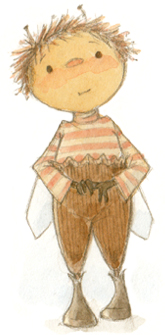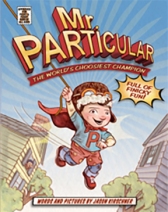“She’s gonna listen to her heart
It’s gonna tell her what to do.”
— Tom Petty
And it’s going to tell you, the writer, what to do. Listening to your main character’s heart—is going to tell you what to write.
But how do you listen to a fictional heart?
 Partway through writing Shining Sea I realized that the voice of my main character, 17-year-old budding singer-songwriter Arion Rush was becoming harder to hear. Her heartbeat was growing faint. Soon I began to understand, it was because I didn’t know her heart.
Partway through writing Shining Sea I realized that the voice of my main character, 17-year-old budding singer-songwriter Arion Rush was becoming harder to hear. Her heartbeat was growing faint. Soon I began to understand, it was because I didn’t know her heart.
Whenever there was a ‘musical moment’ in the story, Arion explored her feelings through songwriting, and her lyrics definitely showed what was in her heart. But everywhere else in the novel, her feelings, her wants, her needs—were hidden.
I decided I should speak to her.
But when I tried to interview Arion the first time, I didn’t get very far.
EXCERPT, INTERVIEW 1:
Me: Hey Arion, how are you? And, where are you?
Arion: I’m in my room at the lighthouse.
Me: Cool. So . . . you probably know, I’m having a little trouble figuring out what’s up with you.
Arion: Yeah, I know. I also know you want me to be nicer than I really am.
Me: Okaaay . . . How about I ask you a few questions?
Arion: Sure. Doesn’t mean I’ll answer.
Me: That’s . . . fine. Let’s start with basics. What’s your favorite color?
Arion: Red. That’s the only thing you got right about me.
Me: Huh. Well . . . that’s something. How do you like Maine?
Arion: I love Maine. I feel like, I belong in the woods. There’s a certain kind of wildness here. It makes me—I can’t believe you just stopped to fix a typo, are you even listening?
Was I even listening?
Most of us take listening for granted. We believe we’re good listeners, and that everyone knows how to listen. But many people aren’t accustomed to listening on a deep level, and that’s very often where characters speak to us.
In preparation for a second interview, I practiced specific meditation exercises that encouraged me to listen to my body, and focus awareness on my breath and emotional flow.
The next time I interviewed Arion, I was much more prepared to listen.
I heard about Arion’s relationship with her mother, and learned it was a source of pain. I found out Arion experienced anxiety due to her sister’s accident, but also that her sister had treated Arion badly in the past. As a result, Arion had closed her heart off to others, including me. She worked on her songs alone, and at the start of Shining Sea, she hadn’t sung for many people.
But by the end of the book, Arion is well on her way to becoming a performer, and more. I’m convinced her transformation occurred not only because I started listening on a deeper level, but because I’d spent some time with my own heart.
EXCERPT, INTERVIEW 2:
Me: I’d like to talk a little more about your mom.
Arion: Look at her canvases.
Me: Um . . .
Arion: Look at the brush strokes. The colors. See all that freedom? All that wild self? See her letting go of control, of normal? She’s not worried about what people think—I’m tired of worrying about what people think. It wears on me. When I’m in the woods, or when I feel the salt air on my skin—
Me: Slow down. Wears on you? Isn’t that kind of an adult thing?
Arion: I’ve been taking care of myself for a while, in case you haven’t noticed. Dad’s got his boats, Mom’s got her art, and Lilah—even before the accident, Lilah was mom’s favorite. She sees Lilah’s wildness, that’s part of it. She thinks it’s like her own. She doesn’t get my wildness. Hey, how about a cup of coffee?
Me: ???
Arion: I need caffeine. Arion RUSH—hello?
Me: I’m here.
Arion: Are you?
Me: Yes, I’m listening.
Arion: I’m becoming an artist.
Me: (Stunned) I’m impressed you know that.
Arion: It hurts.
Me: (Floored) Why?
Arion: I’m different.
Me: Every adolescent feels that way. Every person feels that way.
Arion: Different, like—there’s something wrong with them?
Me: Well there is something wrong with you. You’re not afraid of Bo, and he’s a Siren.
Arion: That makes him wild. I am too—inside. I’m wild, in my heart. Can you write that?
 Mimi Cross is an author, singer, and songwriter. Grammy award–winning artist Rosanne Cash has described Cross’s writing and singing as “Fusing delicacy and power, heart and gut. Inspiring, evocative, and refreshing.” Cross received a bachelor of music from Ithaca College and an MA from New York University and is the creator of Body of Writing, a practice combining yoga and writing that boosts creativity. Her novels, Before Goodbye, and Shining Sea are published by Skyscape. She resides with her young son in New Jersey. Visit her online at mimicross.com
Mimi Cross is an author, singer, and songwriter. Grammy award–winning artist Rosanne Cash has described Cross’s writing and singing as “Fusing delicacy and power, heart and gut. Inspiring, evocative, and refreshing.” Cross received a bachelor of music from Ithaca College and an MA from New York University and is the creator of Body of Writing, a practice combining yoga and writing that boosts creativity. Her novels, Before Goodbye, and Shining Sea are published by Skyscape. She resides with her young son in New Jersey. Visit her online at mimicross.com
If you are registered for Kidlit Summer School, you can download a worksheet of Mimi’s writing exercise at our Exercise Book. This is a password-protected area—only members allowed! Please check your email for the password.
GIVEAWAY! Mimi is kindly giving away a copy of Shining Sea, the paperback or MP3 audiobook version. Winner’s choice! For a chance to win, please leave a comment below.
Don’t miss your chance to get perfect attendance! Leave a comment on this post within the first 24 hours. Moderators have to approve first-time commenters, so your comment may not show up immediately.

 We Nerdy Chicks feel SO LUCKY to have the chance to work with a faculty full of authors who are smart, inspirational, and generous. All of our authors graciously shared their time and their knowledge. Some threw in a giveaway too. Let’s hear if for all of our author-teacher-bloggers!
We Nerdy Chicks feel SO LUCKY to have the chance to work with a faculty full of authors who are smart, inspirational, and generous. All of our authors graciously shared their time and their knowledge. Some threw in a giveaway too. Let’s hear if for all of our author-teacher-bloggers!
 So Hurricane Matthew blew by and some of us lost power, internet, and a whole lot of time to evacuating. And some of us (ahem) still do not have proper internet… so we’re announcing a few more prizes this week, and hoping that we can make up for lost time next week and award those awesome author prizes that went along with the posts!
So Hurricane Matthew blew by and some of us lost power, internet, and a whole lot of time to evacuating. And some of us (ahem) still do not have proper internet… so we’re announcing a few more prizes this week, and hoping that we can make up for lost time next week and award those awesome author prizes that went along with the posts! ainstorming session with Kami and Sudipta is Lynn Marie! Yipeeee Lynn Marie! We’ll be in touch soon.
ainstorming session with Kami and Sudipta is Lynn Marie! Yipeeee Lynn Marie! We’ll be in touch soon. 






 Bonnie Adamson is the illustrator of Bedtime Monster and the “I Wish” series of picture books for Raven Tree Press, as well as Rutabaga Boo!, written by the lovely and talented Sudipta Bardhan-Quallen and due in Spring 2017 from Atheneum. Visit Bonnie at
Bonnie Adamson is the illustrator of Bedtime Monster and the “I Wish” series of picture books for Raven Tree Press, as well as Rutabaga Boo!, written by the lovely and talented Sudipta Bardhan-Quallen and due in Spring 2017 from Atheneum. Visit Bonnie at 





 Kelly Starling Lyons is a children’s book author whose mission is to transform moments, memories and history into stories of discovery. Her books include chapter book, NEATE: Eddie’s Ordeal; CCBC Choices-honored picture book, One Million Men and Me; Ellen’s Broom, a Coretta Scott King Illustrator Honor book, Junior Library Guild and Bank Street Best selection and Tea Cakes for Tosh and Hope’s Gift, Notable Social Studies Trade Books for Young People. Her latest picture book is One More Dino on the Floor. Learn more about Kelly at
Kelly Starling Lyons is a children’s book author whose mission is to transform moments, memories and history into stories of discovery. Her books include chapter book, NEATE: Eddie’s Ordeal; CCBC Choices-honored picture book, One Million Men and Me; Ellen’s Broom, a Coretta Scott King Illustrator Honor book, Junior Library Guild and Bank Street Best selection and Tea Cakes for Tosh and Hope’s Gift, Notable Social Studies Trade Books for Young People. Her latest picture book is One More Dino on the Floor. Learn more about Kelly at